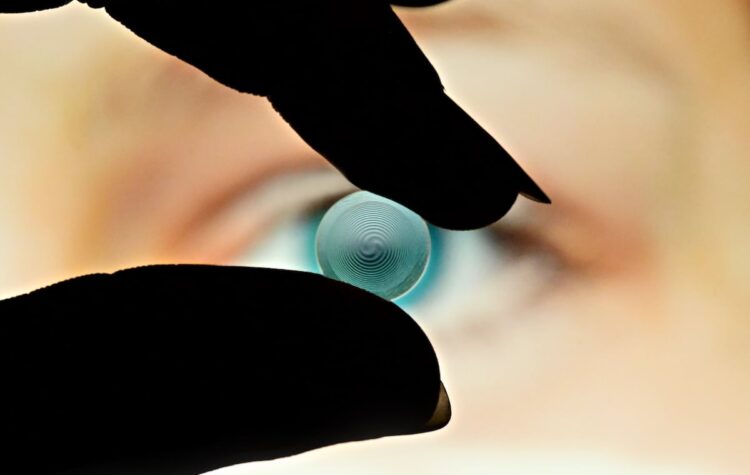Progressive spectacle lenses, diffractive intraocular lenses and multifocal contact lenses are the standard methods for many people to see at different focal points as they go about their day, but what if a whole new spiral lens concept could negate the shortcomings in these designs?
The ‘spiral diopter’ lens is a cross-discipline innovation involving myself, founder and director of Spiral SAS, and Dr Bertrand Simon and his team at the Photonics, Numerical and Nanosciences Laboratory (LP2N), a joint research unit between the Institut d’Optique Graduate School, the University of Bordeaux and the CNRS in France.

The spiral design essentially causes light to spin, like water going down a drain. This phenomenon – known as an optical vortex – creates multiple clear focus points, which allow the lens to provide clear focus at different distances. Optical vortices have the ability to “autofocus” depending on their spinning amplitude.
“Crucially, unlike existing multifocal lens designs, our lens performs well under a wide range of light conditions.”
Our lens also incorporates the elements necessary to make an optical vortex directly into its surface; this is a thriving field of research, but our method simplifies the process, marking a significant advancement in the field of optics.
Crucially, unlike existing multifocal lens designs, our lens performs well under a wide range of light conditions and maintains multifocality regardless of the size of the pupil. The main drawback of multifocal or progressive lenses is that the optical power is distributed according to particular zones of the optical surface (for example, in concentric zones for multifocal contact lenses). Consequently, the opening or closing of the iris means that not all zones are necessarily involved in a loss of multifocality.
With our lens, the distribution takes place over the entire surface, thanks to spiralisation. For potential implant users or people with age-related farsightedness, we believe it could provide consistently clear vision, potentially revolutionising ophthalmology.
The spiral lenses are manufactured by reshaping the surface of a polymer to create the spiral optical vortex design. This process involves a numerical lathe and a precise manipulation of the material to generate the desired optical properties that allow for multi-focusing capabilities and continuous clear vision.
We recently described this work in the journal Optica. The lens was validated by using it to image a digital ‘E’, much like those used on an optometrist’s light-up board. The image quality remained satisfactory regardless of the aperture size used. We also discovered that the optical vortices could be modified by adjusting the topological charge, which is essentially the number of windings around the optical axis.
So far, studies to validate the performance of the spiral lenses have shown promising results in early volunteer trials. Volunteers experienced noticeable improvements in visual acuity at various distances and lighting conditions.
We are now working to better understand the unique optical vortices produced by the lens. We then plan to perform systematic trials of the lens’ ability to correct vision in people to comprehensively establish its performance and advantages in real-world conditions. Further research is ongoing to explore the potential applications in correcting accommodation defects, myopia, hypermetropia, and potentially addressing other ocular aberrations like astigmatism.
In addition, we are exploring applying the concept to prescription spectacles.
All in all, we believe our new lens could significantly improve people’s depth of vision under changing lighting conditions. Further into the future, this technology might also lead to advancements in wearable devices and remote sensing systems for drones or self-driving cars, which could make them more reliable and efficient.
There’s also potential in compact imaging technologies. It could streamline the design and function of these systems while offering a way to accomplish imaging at various depths without additional optical elements. These capabilities, coupled with the lens’ multifocal properties, offer a powerful tool for depth perception in advanced imaging applications.
About the author
Name: Laurent Galinier
Affiliations: Spiral SAS
Location: Caen, France
Years in optical industry: 35
More reading
Curing – not treating – an eye health crisis – Ian Wishart
A hard look at surgical waste – Dr Michael Loughnan & Dr Sukhpal Sandhu
Australian eyewear tariff: How can we accept this? – David Pearson




